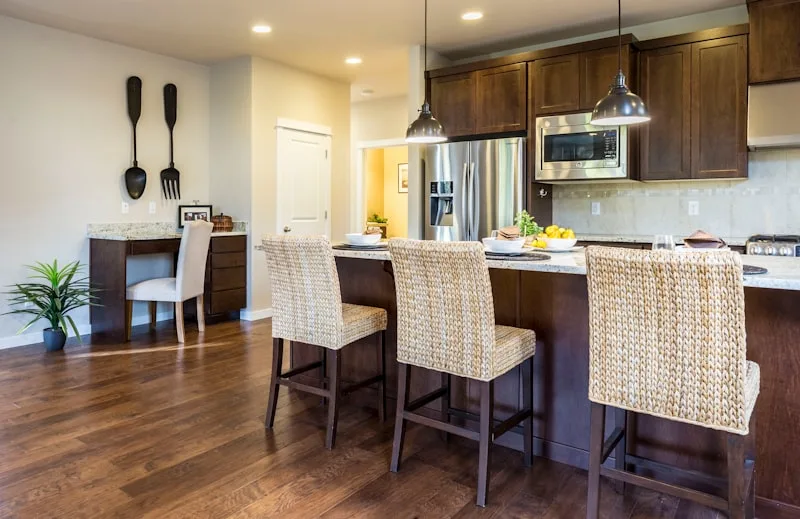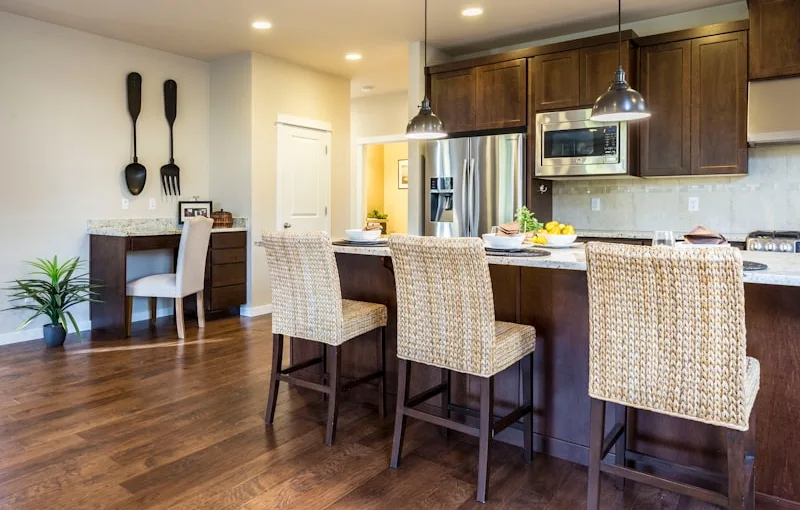First things first, grab a tape measure and a notepad. Start by measuring the width of each wall where you plan to install cabinets. Don’t forget to jot down any windows, doors, or outlets that might get in the way. Think of it like mapping out a treasure hunt; you want to know where all the obstacles are before you start digging!
Next, measure the height from the floor to the ceiling. If you have any crown molding or other architectural features, make sure to account for those too. It’s like measuring for a new pair of shoes; you want to ensure they fit snugly without any awkward gaps.
Now, let’s talk about depth. Standard base cabinets are usually 24 inches deep, but if you’re going for something custom, measure how deep you want them to be. Picture this: you wouldn’t want your cabinets to stick out like a sore thumb, right?
Lastly, consider the space between your countertop and upper cabinets. A common height is 18 inches, but if you’re tall or short, adjust accordingly. It’s all about comfort and accessibility.
So, there you have it! With these simple steps, you’ll be well on your way to measuring your kitchen for cabinets like a pro. Just remember, a little planning goes a long way in creating your dream kitchen!
The Ultimate Guide: Measuring Your Kitchen for Perfect Cabinet Fit
Start by measuring the width, height, and depth of your space. Think of your kitchen as a blank canvas; every inch counts! When measuring the width, don’t just go from wall to wall. Make sure to account for any appliances or fixtures that might intrude into your space. You wouldn’t want your beautiful new cabinets to clash with your fridge, right?
Next up, the height. Measure from the floor to the ceiling, but keep in mind any crown molding or light fixtures that might get in the way. It’s like trying to fit a tall hat on a head with a bun—you need to know what’s going on up there!
Now, let’s talk depth. Standard cabinets are usually 24 inches deep, but if you’re working with a smaller kitchen, you might want to consider shallower options. It’s all about maximizing your space without sacrificing style.
And don’t forget about the layout! Sketch out your kitchen, marking where doors and windows are located. This will help you visualize how your cabinets will fit into the overall design. Think of it as creating a roadmap for your kitchen transformation.
Finally, always double-check your measurements. It’s like measuring twice and cutting once—better safe than sorry! With these tips in hand, you’re well on your way to achieving that perfect cabinet fit that will make your kitchen the envy of all your friends.
Avoid Costly Mistakes: Essential Tips for Measuring Kitchen Cabinets
First off, grab a reliable tape measure. You wouldn’t want to use a flimsy one that could give you false readings, right? Start by measuring the width, height, and depth of your existing cabinets if you’re replacing them. But don’t stop there! Measure the space where the new cabinets will go. It’s like fitting a puzzle piece; you need to know exactly how it will fit into the bigger picture.
Now, here’s a pro tip: always measure in multiple spots. Walls can be wonky, and you might find that one side is wider than the other. It’s like checking the weather—don’t just look out the window; check the forecast! Also, remember to account for any appliances or fixtures that might intrude into your cabinet space. You wouldn’t want to find out your new fridge doesn’t fit because you forgot to measure the door swing!
And let’s not forget about the height. If you’re going for that sleek, modern look with tall cabinets, make sure you measure from the floor to the ceiling. It’s like trying to wear shoes that are two sizes too small—uncomfortable and just plain wrong!
From Chaos to Clarity: A Step-by-Step Approach to Kitchen Cabinet Measurements
First things first, grab a trusty tape measure. This little tool is your best friend in the world of home improvement. Start by measuring the width of your cabinets. It’s like measuring the width of a doorway before you try to move a couch through it—super important! Make sure to measure at the top, middle, and bottom, as sometimes cabinets can be a bit wonky.
Next up, let’s talk height. Measure from the floor to the top of the cabinet. Think of it as measuring your friend’s height for a basketball team—accuracy is key! Don’t forget to account for any crown molding or decorative trim that might add a few extra inches.
Now, depth is where things can get tricky. Measure from the back of the cabinet to the front edge. It’s like checking how deep a pool is before diving in—nobody wants a surprise! Make sure to measure at the top and bottom, just to be safe.
And here’s a pro tip: always jot down your measurements as you go. It’s like keeping score in a game; you don’t want to forget who’s winning! Once you have all your numbers, you’ll have a clear picture of what you’re working with.
So, roll up your sleeves, grab that tape measure, and let’s turn that kitchen chaos into a beautifully organized space!
Maximize Your Space: Expert Techniques for Measuring Kitchen Cabinets
First off, grab a trusty tape measure. This little tool is your best friend in the world of kitchen design. Start by measuring the height, width, and depth of your existing cabinets. Don’t just eyeball it; precision is key! Think of it like baking a cake—too much or too little of an ingredient can ruin the whole thing.
Next, consider the space between your cabinets and the ceiling. This often-overlooked area can be a goldmine for extra storage. If you’ve got a few inches to spare, why not install some decorative shelves or even a spice rack? It’s like adding a cherry on top of your kitchen sundae!
Now, let’s talk about the layout. Are your cabinets in a U-shape, L-shape, or maybe a galley style? Understanding your kitchen’s layout is crucial. It’s like knowing the rules of a game before you play. Measure the distance between cabinets and appliances to ensure you have enough room to move around comfortably. Nobody wants to feel like they’re in a game of kitchen Twister!
Transform Your Kitchen: How Accurate Measurements Lead to Stunning Cabinet Designs
Picture this: you’ve picked out the perfect cabinet style, but when it comes time to install, you realize they don’t fit. Yikes! That’s a nightmare scenario for any homeowner. Accurate measurements ensure that every cabinet, drawer, and shelf fits like a glove, creating a seamless look that elevates your kitchen’s aesthetic. It’s like tailoring a suit; when it fits just right, it transforms your entire appearance.
But it’s not just about looks. Think about functionality. A well-measured kitchen means you can maximize your storage space. You want to make the most of every inch, right? Imagine having a cabinet that’s just a tad too small for your favorite pots and pans. You’d be left scrambling for space, and that’s no fun. With precise measurements, you can design cabinets that accommodate all your kitchen essentials, making cooking and entertaining a breeze.
Measuring Made Easy: Your Go-To Checklist for Kitchen Cabinet Dimensions

First things first, grab your trusty tape measure. Start by measuring the height of your cabinets. Most standard cabinets range from 30 to 42 inches, but if you’re going for that custom look, you might want to go taller. Think of it like choosing the perfect pair of shoes; the right height can make all the difference!
Next up, let’s tackle the width. Standard base cabinets are usually 24 inches deep, but if you’re dreaming of a spacious kitchen, consider going deeper. It’s like adding a little extra room to your closet—who wouldn’t want that? Don’t forget to measure the space between cabinets and walls. This is crucial for ensuring everything fits snugly, just like a puzzle piece.
Now, let’s talk about the depth. Measure from the back of the cabinet to the front. Standard depths are typically 12 inches for wall cabinets and 24 inches for base cabinets. Think of it as the difference between a cozy reading nook and a spacious living room; depth can really change the vibe of your kitchen.
Lastly, jot down any unique features like crown molding or decorative trim. These little details can affect your overall measurements, so treat them like the cherry on top of your sundae. With this checklist in hand, you’ll be ready to tackle your kitchen cabinet dimensions like a pro, making your dream kitchen a reality!
Frequently Asked Questions
What Tools Do I Need to Measure Kitchen Cabinets?
To accurately measure kitchen cabinets, you will need a tape measure for length and width, a level to check for evenness, a square for right angles, and a pencil for marking measurements. Additionally, a notepad or digital device can help you record your measurements for reference.
How to Account for Appliances and Fixtures When Measuring?
When measuring for space planning or renovations, account for appliances and fixtures by including their dimensions in your overall measurements. Ensure to measure the height, width, and depth of each item, and consider any required clearances for installation and operation. This will help create an accurate layout and ensure that all elements fit properly within the designated area.
What Measurements Are Essential for Kitchen Cabinets?
To ensure a proper fit for kitchen cabinets, essential measurements include the height, width, and depth of the space where the cabinets will be installed. Additionally, measure the distance from the floor to the ceiling, the location of plumbing and electrical outlets, and the dimensions of appliances. Accurate measurements help in selecting cabinets that fit seamlessly and function effectively in your kitchen.
How to Measure for Different Cabinet Styles?
To accurately measure for various cabinet styles, start by determining the available space in your kitchen or area. Use a tape measure to record the height, width, and depth of the space where the cabinets will be installed. Consider the style of cabinets you want, as different styles may require specific measurements. For wall cabinets, measure from the floor to the desired height, and for base cabinets, measure the height from the floor to the countertop level. Always account for any appliances or fixtures that may affect the cabinet placement. Document all measurements carefully to ensure a proper fit.
How Do I Measure My Kitchen for Cabinets?
To measure your kitchen for cabinets, start by clearing the area and gathering tools like a tape measure and a notepad. Measure the width and height of each wall where cabinets will be installed, noting any windows, doors, or obstacles. Record the measurements in inches, and ensure to measure from the floor to the ceiling for height. For depth, standard cabinets are typically 24 inches deep. Finally, sketch a layout of your kitchen with the measurements to help visualize the space and plan for cabinet placement.
